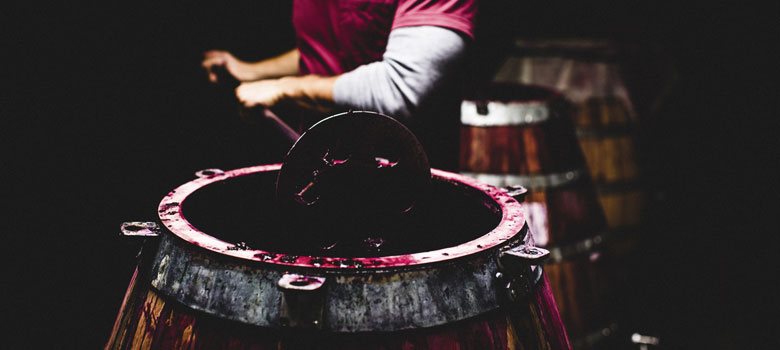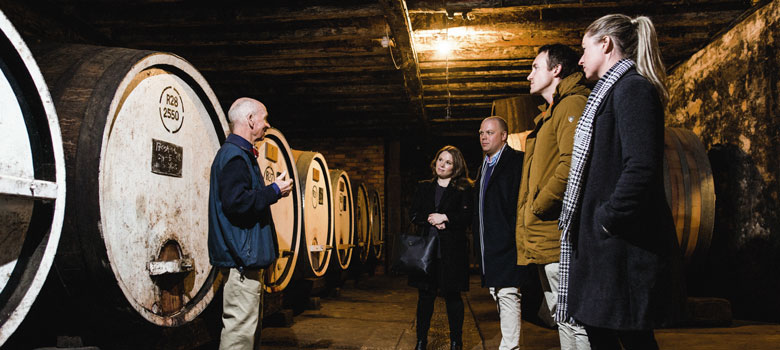
Wine
Australia's First Families of Wine
The Red Wine Chronicles
Australia’s First Families of Wine are the lead authors in the writing of Australia’s Red Wine Chronicles. With generations of innovation and intuition on their side, they’ve shaped the story so far and will continue creating the chapters to come.
The story of Australian red wine is as rich and bold as the drops themselves. It has history at its heart with a fair dose of adventure and intrigue bringing the narrative to life. Each producer adds its own chapter, with some of the most fascinating written by Australia’s First Families of Wine (AFFW). In fact, so pivotal are their tales that we’ve collated their very own Red Wine Chronicles.
To have created such enduring red wine stories, it’s taken vision and determination from some of AFFW’s key characters.
For the Taylors, it was Bill Taylor Senior who first set the scene for a long legacy, as Mitchell Taylor describes. “Bill Taylor Senior was a true visionary who firmly believed that we could craft wines in Australia that would rival the best in the world – a pioneer and a man of great tenacity.”
The Tahbilk story began, Alister Purbrick explains, with “Grandfather, Eric, who devoted his life to red winemaking and endeavoured to make great wines every vintage.”
His first red was the 1948 Bin 11 Shiraz, which is still made to this day, “albeit with a name change,” Alister says, “Since 2002, we have called this wine the Eric Stevens Purbrick (ESP) Shiraz in Grandfather’s honour.”
A main protagonist in d’Arenberg’s history has been d’Arry Osborn, who started making wine in 1943, following in the footsteps of his father and grandfather. As d’Arry’s son and fourth generation winemaker Chester recounts, his father “developed the red stripe and brand name for the winery.” But his input did not end there, d’Arry still goes to work every day at 94 years old!

Above: Absorbing history in the Tahbilk cellar
A crimson plot
Playing another essential part in each family’s story are the red wines themselves, revealing the intertwining plots of variety and region.
The Brown Brothers Winemakers’ Series Shiraz, sourced from a small plot in their Heathcote vineyard, narrates an authentic expression of this unique terroir. While the Burch family’s Howard Park Leston Shiraz, Natalie Burch explains, “makes the case that Margaret River need not just be considered solely for the quality of its Cabernet-based wines.”
Then there’s d’Arry’s Original Grenache Shiraz, which gives an account of the unfolding story of climate change. The current 2018 is only the second vintage to be Grenache dominant. “With climate change,” Chester explains, “our Grenaches are getting bigger and tend to show more complex darker fruits,” allowing them to be the dominant variety in this traditionally Shiraz-led blend.
Left: Yalumba’s iconic clocktower; Right: Sharing a drop of Brown Brothers
It’s the Victorian region of Heathcote that comes to life in the Tyrrell’s Rufus Stone Shiraz. The Hunter Valley family has been making wine in this exciting region where, Chris Tyrrell explains, “the unique topography, combined with a temperate climate and friable ancient Cambrian soils, produces Shiraz fruit with great depth and intensity.”
This story would not be complete without a Barossan chapter, which Yalumba has written. “The Samuel’s Collection Shiraz Cabernet showcases,” Jessica Hill-Smith relates, “all the things you love about Barossa reds, but made in a contemporary, more approachable style.”
Into the future
The red wine stories of these pioneering families will unfold for many years to come, with new generations and trends shaping ensuing plot lines.
For Chester, it’s newer varieties on the horizon, including Mencia, Montepulciano, Nero d’Avola, Sagrantino and Carménère.
Left: Chester and d’Arry Osborn; Right: Tyrrell’s Rufus Stone Shiraz
Whereas Mitchell Taylor emphasises the rising talent. “As a family business now being steered by the third generation, we are already nurturing the fourth generation of Taylors to take the helm when their time comes.”
For Tyrrell’s, adaptation is a strong theme, with Chris Tyrrell saying the future is about, “Continually questioning ourselves in the area of sustainability in our vineyards and winemaking.”
One thing is certain, the chronicle of Australian red wine is going to be a continuous work for generations to come.